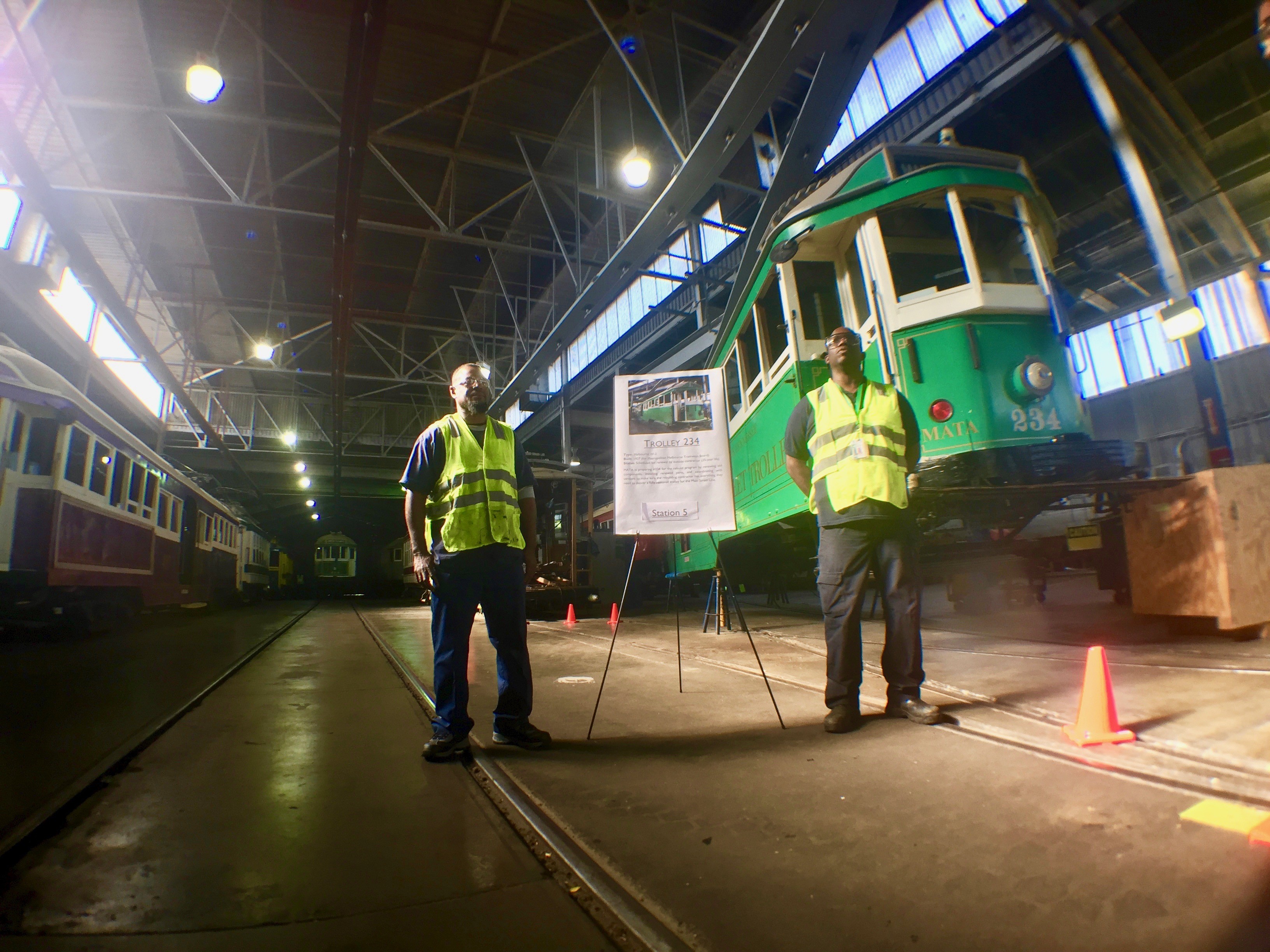 Toby Sells
Toby Sells
MATA employees describe some of the work they’ve been doing to restore Memphis’ vintage trolleys over the last two years.
Expect to see trolleys back out on their rail lines soon but don’t expect to be able to ride one for more than a year.
Officials with the Memphis Area Transit Authority (MATA) announced Thursday that they expect to have all the physical work needed to bring trolleys back to Memphis in about 12 months. However, the trolleys’ return to service will depend on a certification of MATA’s trolley safety plan by the Federal Transit Authority (FTA) and there’s no firm date on that decision.
“We’re proud to say we’re making a lot of progress,” said MATA inerim chief executive officer, Gary Rosenfield on Thursday. “In the coming days and weeks, we’ll see a lot more activity out in the field as we prepare to restart the trolley system in the next few months.”
Rosenfield said trolleys will be out on the rails for testing, electrical service will be restored to the catenary lines (the overhead wires that powers the trolleys), and the repair of the pavers along the rails on Main Street.
MATA official invited members of the media to a special board meeting Thursday at its Main Street facility, informally known as the “trolley barn.” Crews there are overhauling the Memphis trolley fleet, which includes cars that are more than 100 years old.
The Main Street line will be the first to get those big, lumbering, vintage, one-of-a-kind trolleys back when MATA gets the green light from the FTA. Six cars (four service cars and two spares) will roll on that line, which runs from the Pinch District to South Main.
All of the work to get the trolleys back on the rails has cost about $9.6 million so far, according to Rosenfield. That work has continued over two years since two trolleys caught fire in 2013 and 2014.
Those fires have been blamed, generally, on a rail system that was deeply neglected for a long time. MATA’s interim trolley director, Timothy Borchers, said his team investigated the precise cause of the fires and, on Thursday, said the devices meant to keep the trolleys safe all failed.
“The street car was running, but all of the protection devices weren’t working,” Borchers said. “Typically on a street car running on a street, it uses about 60 amps of power. The protection devices were set to trip when they hit about 100 (amps) to 120 (amps), and then it blows off. They weren’t working. The substation pumped nearly 4,000 amps into each of those cars and turned them into fireballs.”
MATA officials said to watch for trolley activity on the rails by late spring or early summer.